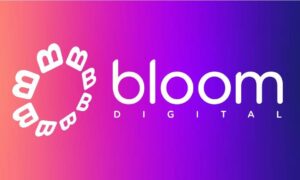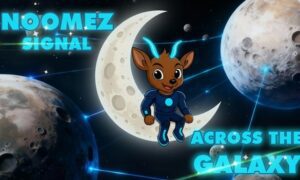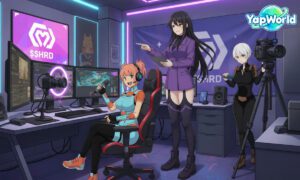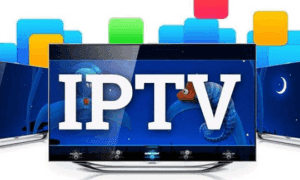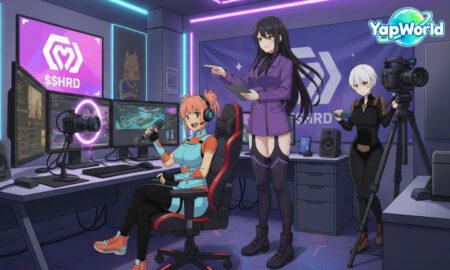Creative agencies nowadays are faced with an exerting environment that has made it the order of the day rather than the exception:
- to have several client projects at hand
- to meet strict deadlines
- to satisfy increasingly demanding clientele.
The so-called creative chaos method, which was probably manageable in the past, now puts at risk the profitability of the agency and the ability to maintain a healthy team.
Overlapping campaigns, last-minute changes, and clients’ expectations of granularity in billing are forcing agencies to be on the edge of operational complexities.
Under such circumstances, having no clear picture of where exactly time and resources are going is unacceptable because the result of this operational blindness could be undercharging for the job repeatedly, undelivering on deadlines, and burnout.
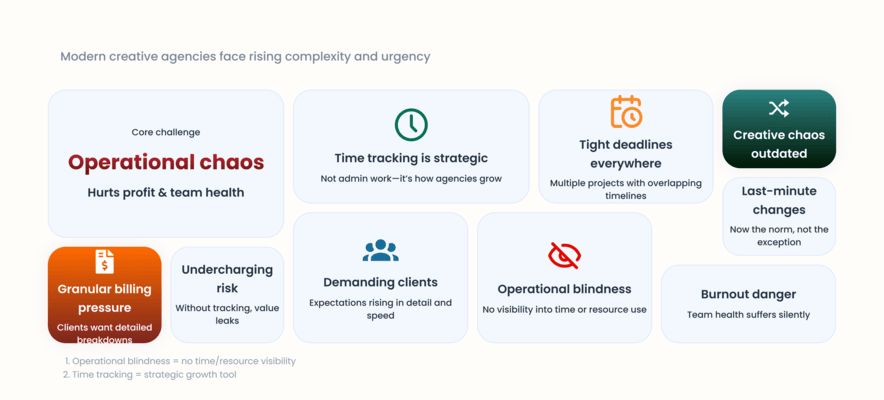
Agency time tracking: It is no longer an administrative afterthought – it has become a strategic requirement that has redefined the way successful agencies work, sell, and grow.
The Pressure of Creative Workflows
Creativity thrives on inspiration, but deadlines don’t wait for it
Projects blow past time frames, or priorities change with each phone call to the client; as a result, creative flow gets disrupted when it is least expected, and it plays against the collaborative spirit in teams.
Zoom In: The mess is heightened by manual time management that records nothing, miscommunication that makes everyone speculate, and, of course, the overworking that overcooks talent.
Creative individuals are literally toiling on the lower end of administrative duties, running timesheets on spreadsheets, instead of working with their breakthrough potential.
Automatic time tracking changes this chaos into a perfect rhythm.
It uncovers the true path that hours are traveling, spots bottlenecks before they seem to explode, and makes people responsible, without killing creativity.
The Bottom Line: A structural approach that time tracking provides never inhibits creativity; it merely lends structure in which creativity can thrive and be realized.
Why Time Tracking Tools Are Now Non-Negotiable
Task/Client Visibility
- Real-time project monitoring (know exactly who is sitting down to redesign the logo of Brand X)
- Resource allocation epiphanies (for example, Sarah is working on one customer 60 percent of the time, which indicates that there is a workload mismatch situation)
- Bottleneck identification (identify when approval processes keep project schedules at bay).
Accuracy and Accountability in Billing
- Accurate invoicing (guestimating billing can be done away with; you will get accurate hours worked on every project)
- Client transparency (give full breakdowns of 12 hours on wireframes, 8 hours on revisions, etc.)
- Internal cost tracking (enter billable and actual time to calculate the profitability of a project).
Remote Teamwork Management
- Async coordination (the members of a team in different time zones find out about the project process without repeated controls)
- Performance benchmarking (compare similar tasks (logo design: 4 h vs. 8 h) to refine estimates)
- Client contacts (automatically inform your customers on the progress with the status of the project)
⌛Agency time tracking is an important part of the business process that can move disorganized work processes into a well-agreed profitable business operation and increase team accountability.
Final Thoughts: The Future of Creative Work Is Tracked
The creative agencies that fail to keep track of their time are virtually wasting money and missing opportunities.
The statistical evidence is that proper time management:
- has a direct profitability boost
- implies a happier customer
- translates into business growth.
Agencies interested in progressive success (whether single freelancers or upwards of 200-person studios) are finding that visibility into time allocation can revolutionize their businesses.
In particular, they easily determine which projects are most resource-intensive, which customers should be charged high premiums, and where their teams are most effective.
💡This is not micromanagement; it is strategic intelligence.
This transformation is made possible by TMetric. Monitor your teams seamlessly, bill accurately, and make judgments based on actual data instead of guesses.
🌟The result? Greater profitability, more satisfied customers, upwardly scalable growth in line with ambition.
What to Look For in a Time Tracking Tool
The choice of the time tracking tool can either make or break the productivity of a team.
Creative teams require unique capabilities that cannot be minimal stopwatch functions.
Agencies that are the controllers of multiple clients should implement project-based time tracking.
Seek out timekeeping methods that allow:
- to create projects
- to classify time entries
- to provide impeccable billing
- to simplify budgeting.
Task-level breakdown presents detailed information on where the time really goes.
Decompose projects into discrete tasks such as wireframe, revisions, or client call to source, see where the bottlenecks lie, and get better estimates.
Reporting and insights allow you to extract intelligence from the raw time data.
Contemporary workflows cannot do without integrations.
Smooth integrations with Asana, Jira, Slack, and design software remove the need to enter data twice, and everything stays in sync.
TMetric is designed to meet the demands of agencies since it provides all the above-mentioned features, including comprehensive project management, 50+ integrations, and project reporting to assist creative studios to maintain profitability and produce exceptional work.












